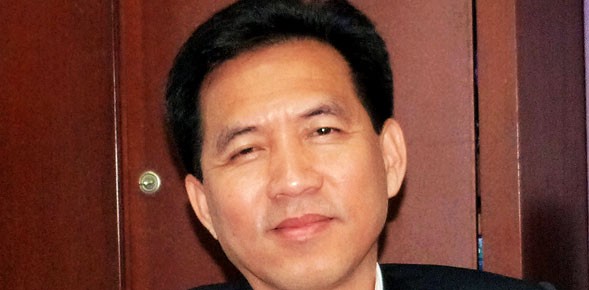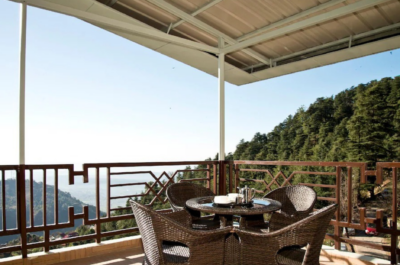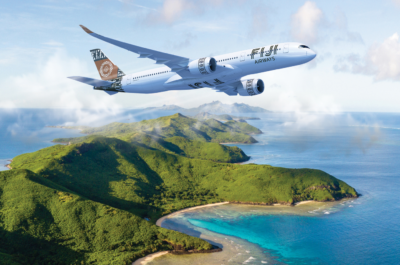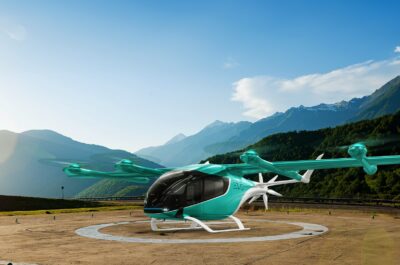Thai Smile is the new sub-brand of Thai Airways, a hybrid product between low cost and premium service. With simplified service, a trendier outlook and lower fares, Thailand’s national carrier hopes to win back customers on its regional flights.
As air transport in Bangkok is increasingly more competitive with more foreign carriers and low cost airlines serving Thailand, Thai Airways has experience an erosion of its market shares for a decade. To stop the bleeding, Thai Airways previous President Piyasvasti Amranand decided to launch a new subsidiary, an hybrid model between low cost and premium carrier. Thai Smile was then born and made its maiden flights on July 7th, with the first route between Bangkok and Macau. His Managing Director Woranate Laprabang talks to TravelDailyNews Asia-Pacific about the future of the carrier and its positioning.
How does Thai Smile work? Is it a fully independent airline?
Woranate Laprabang- We are a business unit of Thai Airways International. We have a dedicated team but all decisions are taken by the holding company Thai Airways. For example, we fly with the same code letter than Thai (TG), even if we could envision in the future to have our own code. Our strategy is simple: Thai Smile will seize all the opportunities from fast growing markets from the ASEAN, China and India. But due to a fleet policy of large aircraft, these destinations are currently underserved by Thai Airways International. We have a single model fleet of Airbus A320, which is then perfectly adapted to serve markets within a 3.00 to 3.30-hour flight range.
How do you predict your growth in the coming year?
Woranate Laprabang: We just put into service our first aircraft but we will add three more Airbuses A320 until year end. We will then receive 2 more aircraft in 2013, two more in 2014 and 3 more in 2015. But we just decided to add another nine aircraft due for delivery in 2014 and 2015. It will then give us a total of 20 aircraft, larger than Nok Air or close to the current stand of Thai AirAsia. Our plan for this year is to first serve domestic destinations. Until August, we will launch flights to Phuket, Krabi and Chiang Mai and step-by-step take over other domestic routes from Thai Airways. Our smaller aircraft will help the Thai Airways Group to offer more frequencies. For example from Krabi, we will fly 4 to 5 times daily from September compared to two daily flights currently with Thai Airways.
Why do you not open more international destinations right away?
Woranate Laprabang: Macau is our first new destination abroad. We will certainly fly more international destinations from next year. Our expansion strategy is based on three types of routes: replacement routes from Thai Airways by narrow-body aircraft. This will most probably include destinations in the Mekong Sub-Region such as Phnom Penh, Yangon or Vientiane as well as some regional destinations such as Penang; in a medium term, we will look at new ‘opportunities routes’. That would include regional destinations such as Cebu, Luang Prabang, Mandalay, Medan, Nanning, Shenzhen or Surabaya. The destinations I give are just examples of the cities we could eventually serve due to their potential . And then, in a more distant future, we want to base some aircraft in provincial cities. It could be Chiang Mai, Phuket or Krabi…
How do you position your airline versus Nok Air and Thai Airways?
Woranate Laprabang: In contrary to Nok Air, we provide all the services that passengers would expect from Thai Airways: baggage franchise of 20 kg or 30 kg, frequent flyers miles, lounge access. On board, we offer a simple complimentary meal –snack or sandwich- as well as a simplified business class product similar to the one available on European short-haul routes. In contrary to Thai Airways, which emphasizes a lot on the “Thainess” of its excellent service, we want to give a more modern image, emphasizing a trendy young looking airline with good value for money and a smile!
Mentioning value for money, how cheaper are you compared to Thai Airways? Do you also propose a range of fares based on yield management’s principles?
Woranate Laprabang: Our prices will be on average 10% to 15% cheaper on the full fare than Thai Airways current tariff’s structure. Of course, this does not include regular promotions that we will offer. We are probably slightly more expensive than low cost competition but passengers should remember that our fares are all inclusive! Meanwhile, I must admit that we do not work with yield-management methods to adjust prices according to market’s demand. We are effectively into Thai Airways Fare Management System and we definitely need to change this to be more reactive to competition. On short haul routes, price is an essential decision factor.
What are your expectations for this year and next year?
Woranate Laprabang: We expect to carry until year-end some 300,000 passengers on six destinations served by 90 round-trips per week. This would bring revenues of THB 1.3 billion (US$ 412 million). In 2013, I expect to transport 1.5 million passengers and reach revenues of THB 4.8 billion (US$ 1.52 billion). We could already reach a million passengers by August 2013. In the long term, I predict that we could fly to 25 destinations by 2015, including 10 new routes.
Luc Citrinot a French national is a freelance journalist and consultant in tourism and air transport with over 20 years experience. Based in Paris and Bangkok, he works for various travel and air transport trade publications in Europe and Asia.











































































